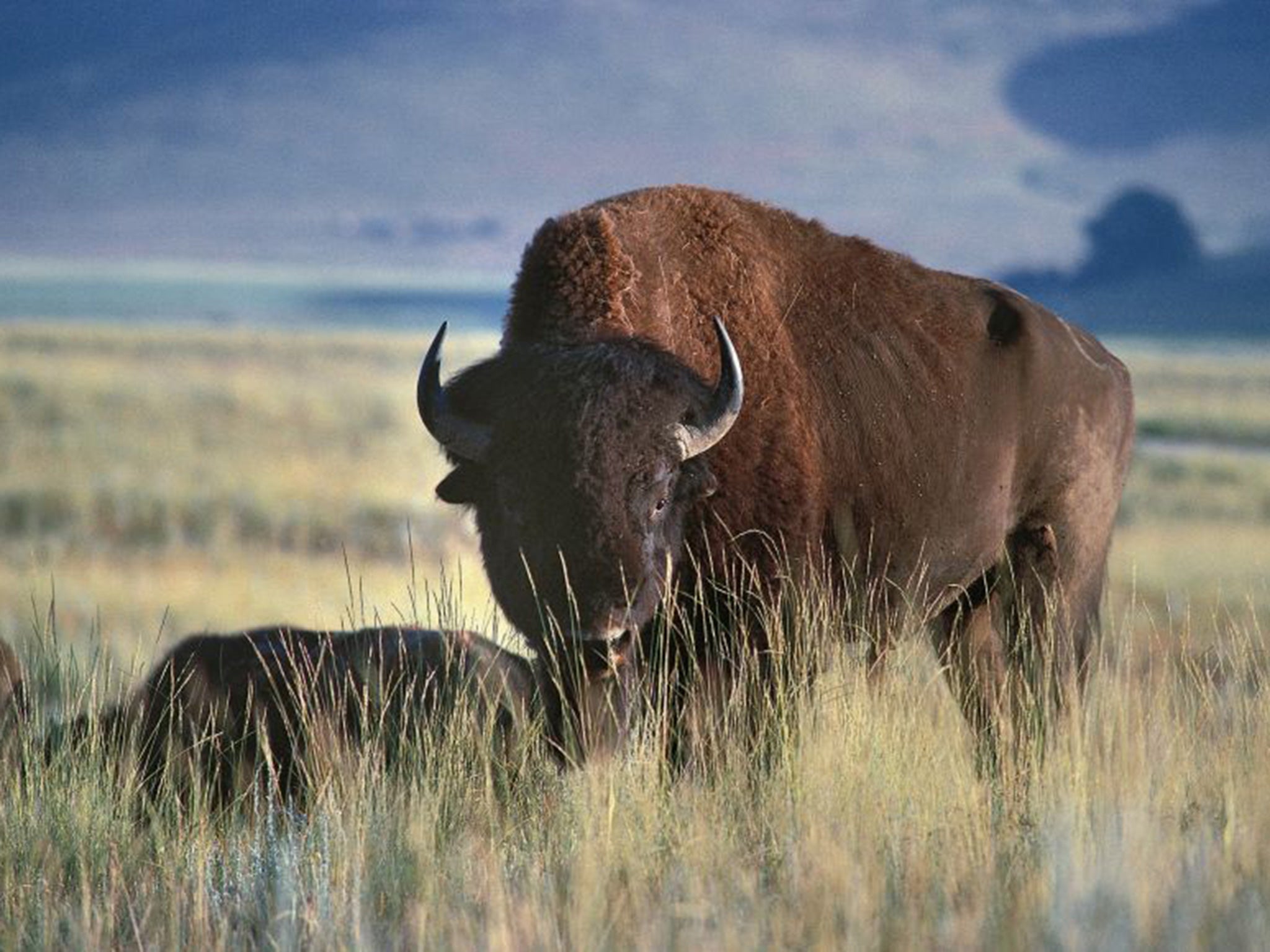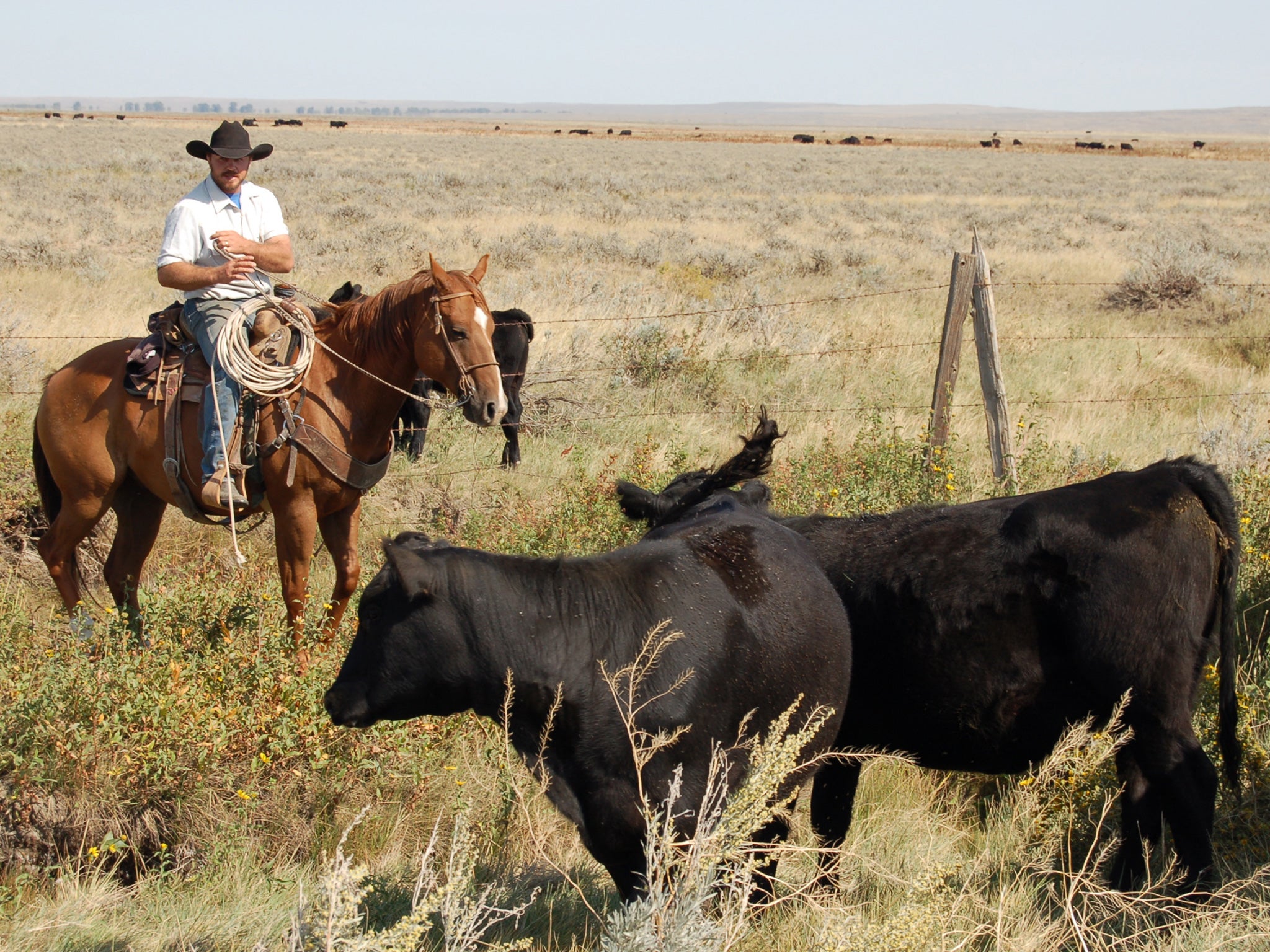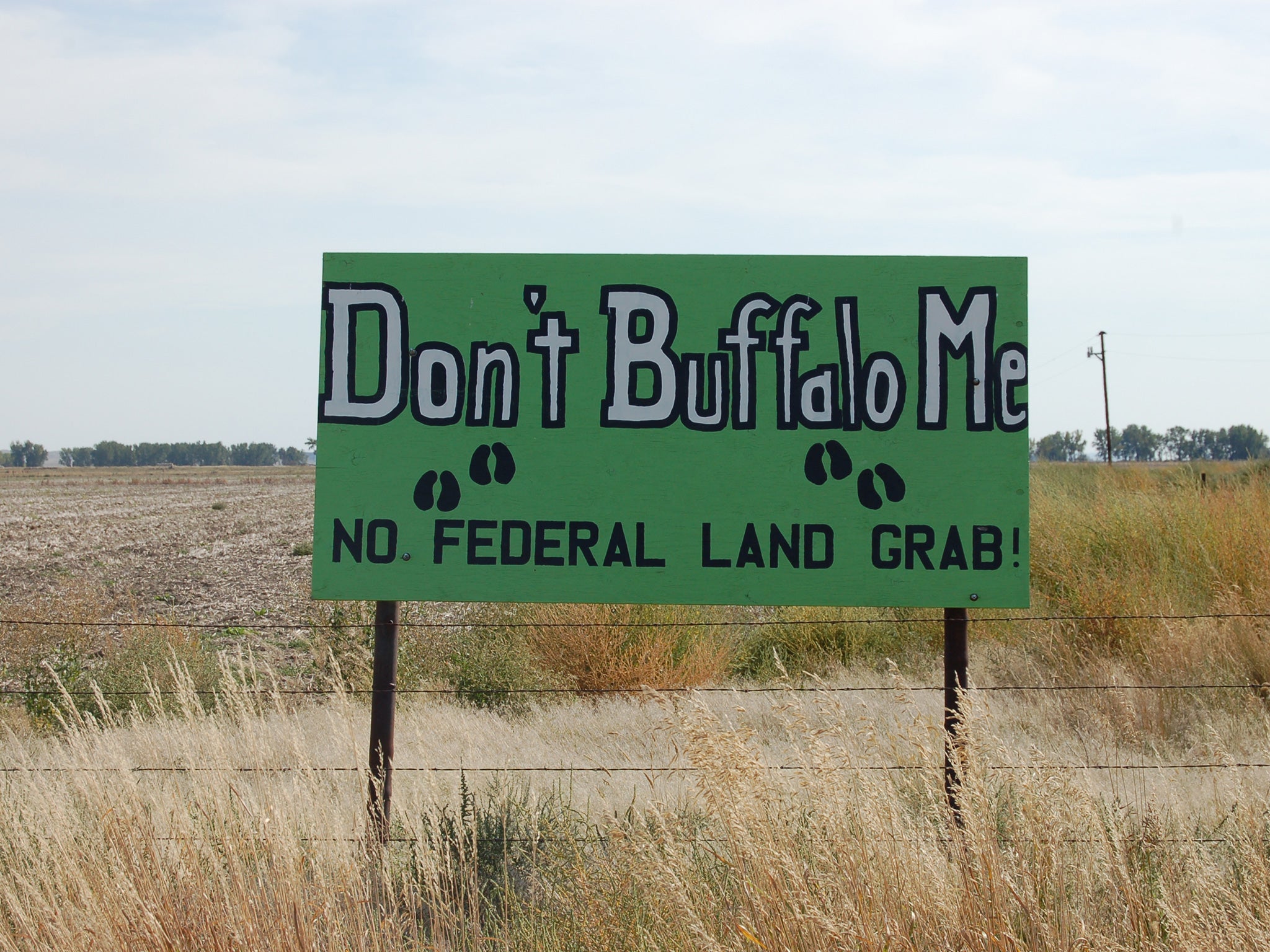Buffalo return to Montana’s Great Plains - a victory for environmentalists but a blow to ranchers
A battle for hearts and minds in ‘America’s Serengeti’

Halfway to the distant horizon, a herd of several hundred buffalo graze in the long grasses of the Great Plains. High above the rolling terrain, a big hawk wheels and swoops. Four elk bucks – a stag party, if you will – bounce away through the soft, swaying yellow sage. This swathe of protected prairie in northern Montana more closely resembles the national parks of Africa than it does nearby Yellowstone. Little wonder, then, that it has been nicknamed “America’s Serengeti”.
When explorers Meriweather Lewis and William Clark first passed this spot in 1805, they wrote in their journals of hillsides “black with buffalo”. But over the subsequent 75 years, Montana’s buffalo – also known as the American Bison – were hunted out of existence. In 2005, the non-profit conservation group American Prairie Reserve (APR) reintroduced 16 of the stately beasts to the landscape. A decade later, the herd has grown to 600. By the time its reserve is complete, APR expects to see 10,000 bison roaming a wildlife area approximately the size of Connecticut.
The bison are just part of APR’s mission, which is to return its patch of Montana prairie to its pre-19th-century state. But to do so it must encourage many local ranchers to sell their land – and not all of them are persuadable. Opponents see the efforts of APR conservationists as a kind of gentrification of the wilderness: wealthy outsiders, in search of a spurious authenticity. “APR talks about going back to the Lewis and Clark era, but nobody really wants to live in that time,” said 81-year-old Bill French, whose 60,000-acre ranch is bordered on two sides by APR land. “They have their computers and their hot running water while they’re out here.”
During the 1990s, several conservation groups spotted that, for all their work on behalf of rainforests and glaciers, they had done little to protect the world’s grasslands. The US Great Plains was one of the few remaining grassland regions of sufficient scale to sustain a complete, working ecosystem, and which had been largely left to cattle farming, not tilled for crops.
APR was established in 2001, led by Sean Gerrity – a Montana native and former Silicon Valley management consultant – who, to buy the necessary land, raised much of the start-up cash from his old contacts in the venture capital world. To date, the group has raised more than $70m (£46m) from donors including the heirs to the Mars confectionery fortune; Susan Packard Orr, daughter of the Hewlett-Packard co-founder; and Roger Enrico, the former chief executive of PepsiCo.
Smaller contributors from all 50 US states and 12 countries have also funded the project, which so far covers more than 305,000 acres bordering two existing protected areas, the Charles M Russell National Wildlife Refuge and the Upper Missouri River Breaks National Monument. Eventually, APR hopes to accumulate 500,000 private acres to stitch to those public lands, creating a total reserve of 3.5 million contiguous acres, larger than any existing national park in the lower 48 states.
As well as buffalo, the reserve already boasts thriving populations of deer and antelope, 250 bird varieties from sage grouse to golden eagles, prairie dogs, coyotes, harvester ants, rattlesnakes and manifold other animal and plant species. Humans are rare: the reserve is open to anyone, but it has just three small campsites and an education centre, which opened this summer, an hour’s drive from the closest paved road – and three more hours to any of Montana’s small cities.

Compared to the mountains in the east of the state, the prairie is subtle, but it can be brutal, too: temperatures range from 45C in the summer to -40C in winter. “It’s a place that reveals itself slowly,” said APR board member and landscape painter Clyde Aspevig, who grew up on a nearby ranch. “I would describe it as a perfect example of the sublime: it can be simultaneously terrifying and the most beautiful thing you’ve ever seen. The scale of the landscape can leave you breathless.”
Mr French’s grandparents arrived to farm their corner of Phillips County in 1917. His family toughed it out through the Depression and the Dust Bowl; today, his grandchildren work alongside him. The land is his life’s work. He fears APR will buy out the surrounding ranches, discouraging future generations of farmers and destroying a way of life. “Phillips County has two really good industries: livestock and grain farming. American Prairie are trying to do away with both,” he said. “They want 3.5 million acres. How many people does that displace?”
There was similarly staunch opposition when, in 2001, departing President Bill Clinton designated the Upper Missouri River Breaks as a national monument, thus limiting cattle grazing in the area.
Yet ranching in the region has long been in decline. The population of Phillips County fell by 10 per cent per decade for the past century, and today is fewer than 4,200. APR purchases land only from willing sellers, according to the group’s communications manager, Hilary Parker. “Some people don’t like the fact that what their family was good at for 100 years has changed, and we don’t blame them,” she said. “But it was happening before we were here, and it would happen even if we had never come.”
In a bid to improve community relations, APR launched Wild Sky, a side enterprise selling natural beef from Montana ranches to high-end food businesses nationwide, including top restaurants in New York and California. Since 2013, Wild Sky has recruited four ranchers, who receive a premium for their cows on condition that they are grass-fed, hormone-free, and graze where other wildlife are left to flourish.
They want 3.5 million acres. How many people does that displace?
Fifth-generation rancher Michelle Fox said joining the Wild Sky programme had a big impact on her bottom line, though her sons were forced to give up a favourite pastime – shooting prairie dogs. “What Wild Sky asked us to do was no different to what we’ve done for generations,” said Ms Fox, 39, a member of the Gros Ventre tribe from the Fort Belknap Indian Community, which borders APR. “We weren’t giving cows hormones, we weren’t feeding them silage. Our beef was always natural – and we’ve always been very tolerant of buffalo and other wildlife.”
Until recently, she said she didn’t realise the importance of the APR project. “I thought, ‘They’re just buying up these places so that rich people can come and visit them!’”
That is a preconception APR is keen to dispel, though visitors to the reserve’s Kestrel Camp, a cluster of yurts with air-conditioning and fine dining, can expect to pay $1,200 per night for the privilege. (The more basic Buffalo Camp, by contrast, is a mere $10 per night.) Ms Parker described Kestrel as a “development tool” designed in part to attract prospective donors, and emphasised that the reserve has also begun to invite groups of inner-city schoolchildren and conservation volunteers.

Wesley Gush, a 24-year-old volunteer from South Africa, grew up working on his family’s private game reserve. “The landscape here is certainly reminiscent of the great plains of Africa,” he said. “The biggest absence are the predators. The herbivores here are not regulated by a lion, a leopard or a cheetah, so at the moment you have a very lopsided ecosystem.”
Wolves were reintroduced to Yellowstone during the 1990s, despite the loud objections of local ranchers. Current regulations do not allow APR to actively reintroduce any apex predators such as wolves, bears or mountain lions to the prairie landscape. Over time, however, the group hopes that those animals will naturally migrate to the reserve via so-called “wildlife corridors”, from their habitats in Yellowstone and Glacier National Park.
Sitting outside at Kestrel Camp, looking west towards a view virtually untouched by human influence for 100 miles, Ms Parker watched the bison herd grazing on a far-off slope. “In my lifetime,” she said, “I’d like to sit here and watch wolves chase those bison.”
Join our commenting forum
Join thought-provoking conversations, follow other Independent readers and see their replies
0Comments